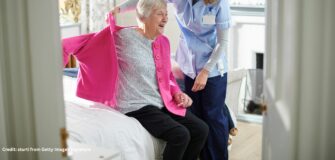Keys to preventing debilitating falls in aged care homes
Share
New research from Flinders University points to clear evidence-based strategies to mitigate alarming falls rates within Australia’s residential aged care facilities.
Currently falls cost the national health system $2.5 billion annually, with severe personal impacts. But experts say consistency in tailored exercise alongside adaptable prevention plans can make a life-changing difference for vulnerable older adults.
“We have found that both regular exercise and a personalised falls prevention plan based on each resident’s individual needs should significantly reduce the likelihood of a fall,” co-author Dr Suzanne Dyer said.
The researchers analysed the conditions effectively preventing falls in care home populations. Dr Dyer underscored that exercise programs can reduce falls by building strength and balance, but must be consistent as the benefits will be lost if they stop exercising.
“Much like any exercise program, it should include a combination of exercise types such as balance and resistance and be tailored, allowing for individual abilities and preference,” Dr Dyer explained.
Accordingly, facilities must commit resources to maintaining evidence-based activities adjusted to functional levels and preferences. Impact also depends on accurately identifying individual risks.
Co-author Dr Jenni Suen said assessments determining interventions – whether mobility aids, vision correction or environment modifications – are key. Critically, staff should retain flexibility to adjust supports on emerging needs.
“However, this was only true when the care home staff and managers were able to modify the strategies according to specific circumstances, for example considering whether they had dementia or not.”
Researchers say policymakers must heed the compounding health, quality of life and cost factors as fall numbers trend unacceptably upward nationwide. They also called for urgent investments in gold standard approaches to reconcile guidance with on-site realities.
Findings directly informed Australia’s falls prevention guidelines currently open for consultations. Dr Suen said combining consistent and appropriate exercise with a personalised falls prevention strategy that can be adapted by care home staff could reduce falls in older people in residential care.
“These simple additional considerations for both residents and staff appear to differentiate between successfully preventing falls or not. Therefore, considering these factors when planning a falls prevention program in residential aged care, could make all the difference,” Dr Suen said.
“Given the serious consequences for residents and the associated high costs of falls, it is critical that adequate resources are provided to ensure that falls prevention programs can be ongoing in aged care homes, particularly including exercise tailored to residents,” Dr Dyer added.
Ritchelle is a Content Producer for Healthcare Channel, Australia’s premier resource of information for healthcare.




